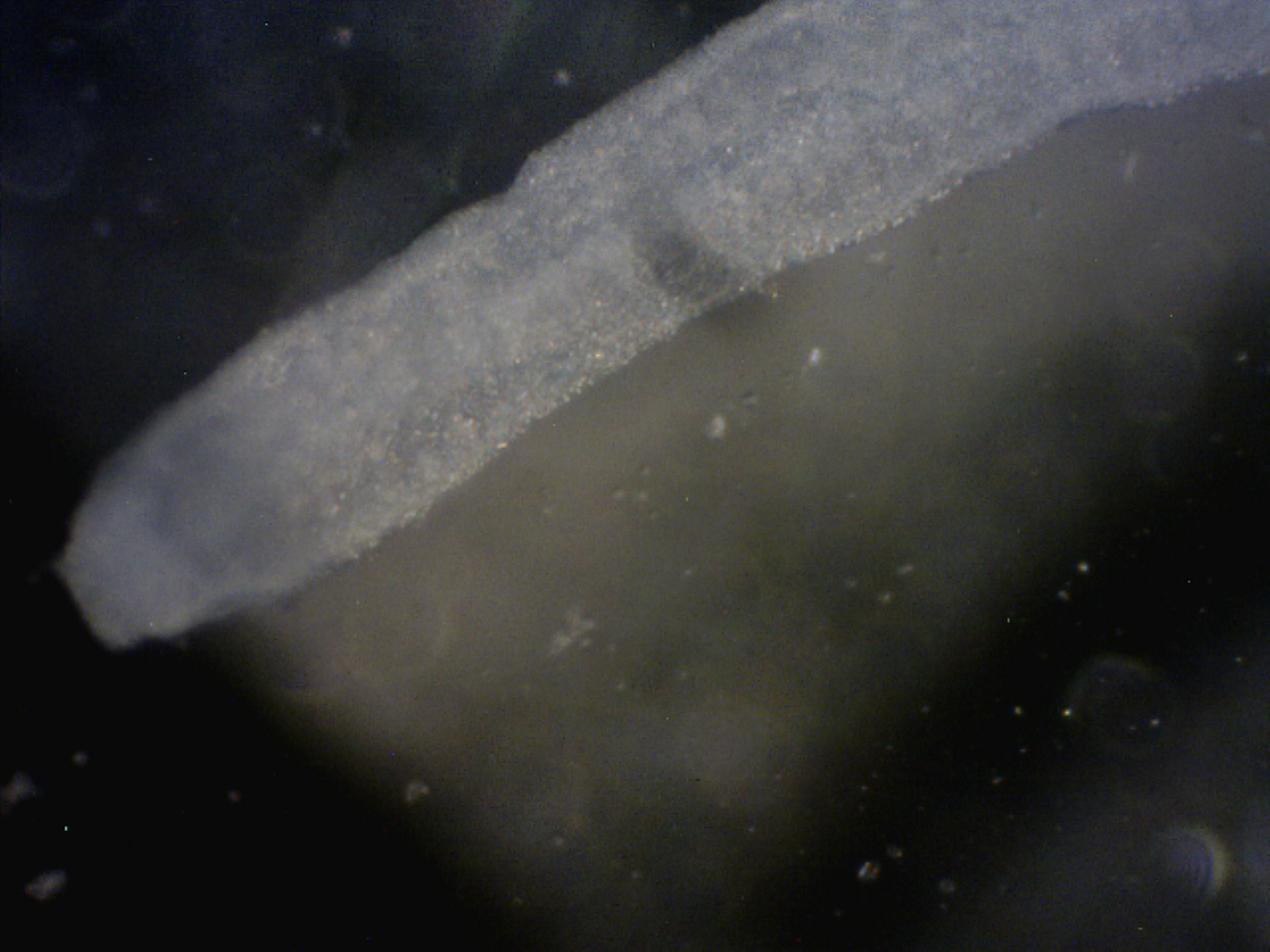Overview
Introduction
Economic Importance
Physical Description
Size
Ecology
Local Occurrence
Global Distribution
Crypsis
Life History & Behaviour
Life Cycle & Reproduction
Locomotion
Feeding (Report)
Anatomy & Physiology
Nervous System
Musculature
Respiration, Circulation & Excretion
Evolution & Systematics
Systematics
Conservation & Threats
Conservation
Threats
References |
RESPIRATION, CIRCULATION & EXCRETION

Figure 5.4: Generalised anatomy of a hydrozoa medusae. Adapted from Ruppert
et al., 2004. |

Figure 5.5: Close up of Aequorea sp. tentacle.
Photo taken on Heron Island by Katie Maling.
|

Figure 5.6: Close up of Aequorea sp. tentacle
bulb. Photo taken on Heron Island by Katie Maling. |
RESPIRATION:
Both the tentacles and the body wall act as respiratory surfaces in cnidaria (Ruppert et al., 2004). Oxygen is diffused across the body from the surrounding water. The circulation of water over the body surface facilitates gas exchange (Ruppert et al., 2004).
The respiration rate of jellyfish is influence by food uptake, size of the individual, temperature and growth rate (Moller & Riisgard, 2007). As energy is used to fuel growth and maintenance of the organism, the metabolic rate increases and more oxygen is consumed (Moller & Riisgard, 2007).
CIRCULATION:
Circulation takes place in the coelenteron, a blind cavity that opens to the surrounding environment via the mouth (Ruppert et al, 2004). In medusa, it is regionally specialised into a stomach which leads to the radial canals, which then extend to join a ring canal (Ruppert et al., 2004) (see Figure 5.4 above).
The contractile motion of the bell transports fluid around the body of the jellyfish and to the tentacles where captured prey is retained (Katija et al., 2012). As the bell expands, the internal fluid adjacent to the bell margin is captured and drawn through the tentacles and into the body (Katija et al., 2012). As the bell contracts, fluid is pushed from the body cavity adjacent to the bell margin and down into the tentacles (Katija et al., 2012). This is illustrated in Figure 5.5 below.

Figure 5.7: The circulation within a generalised hydrozoan. Adapted
from Ruppert et al., 2004. |
Overall, the circulation of internal fluids is accomplished by muscular contraction and relaxation (Ruppert et al., 2004) and as a result, it is continually moved around the body during swimming.
As a result of internal circulation, the tentacles in Aequorea sp. shortened and lengthened. A close up of the Aequorea sp. tentacle can be seen below.
EXCRETION:
Ammonia is the waste product excreted in cnidarians (Ruppert et al., 2004). Cnidarians do not have any metanephridia (kidneys) that aid in excretion. Instead, ammonia is dissolved in water and transported across the body wall via diffusion (Ruppert et al., 2004). The excretory waste is then washed away from the organisms by currents. |
|